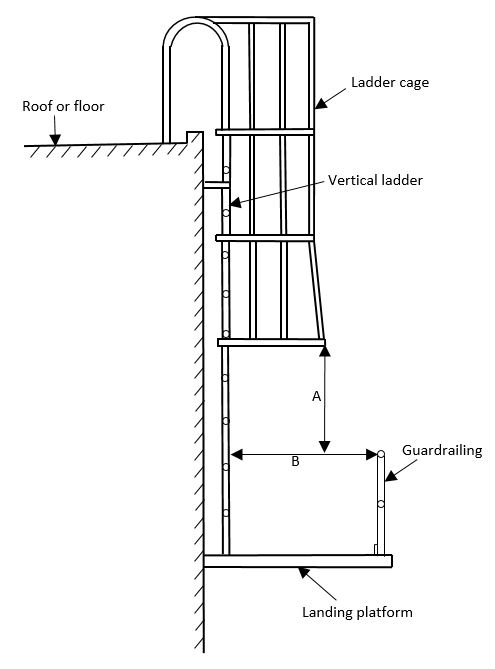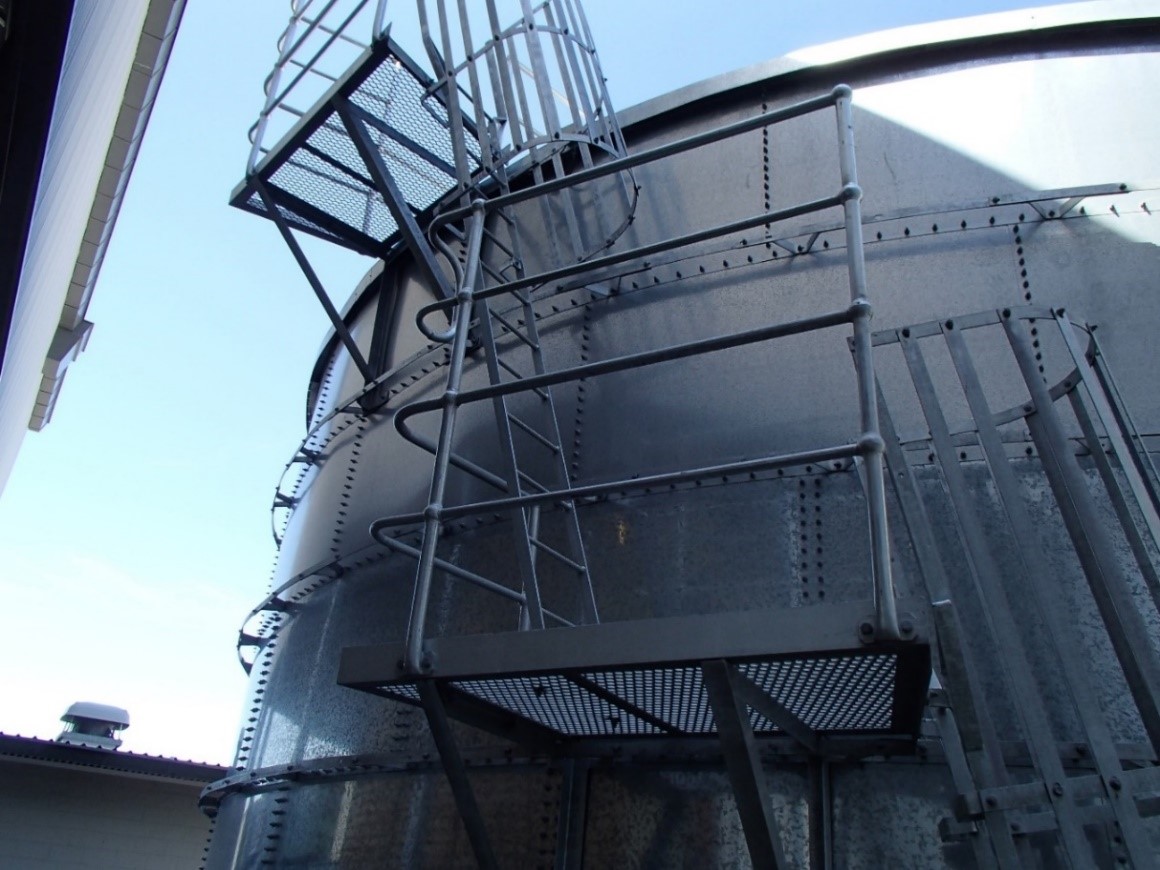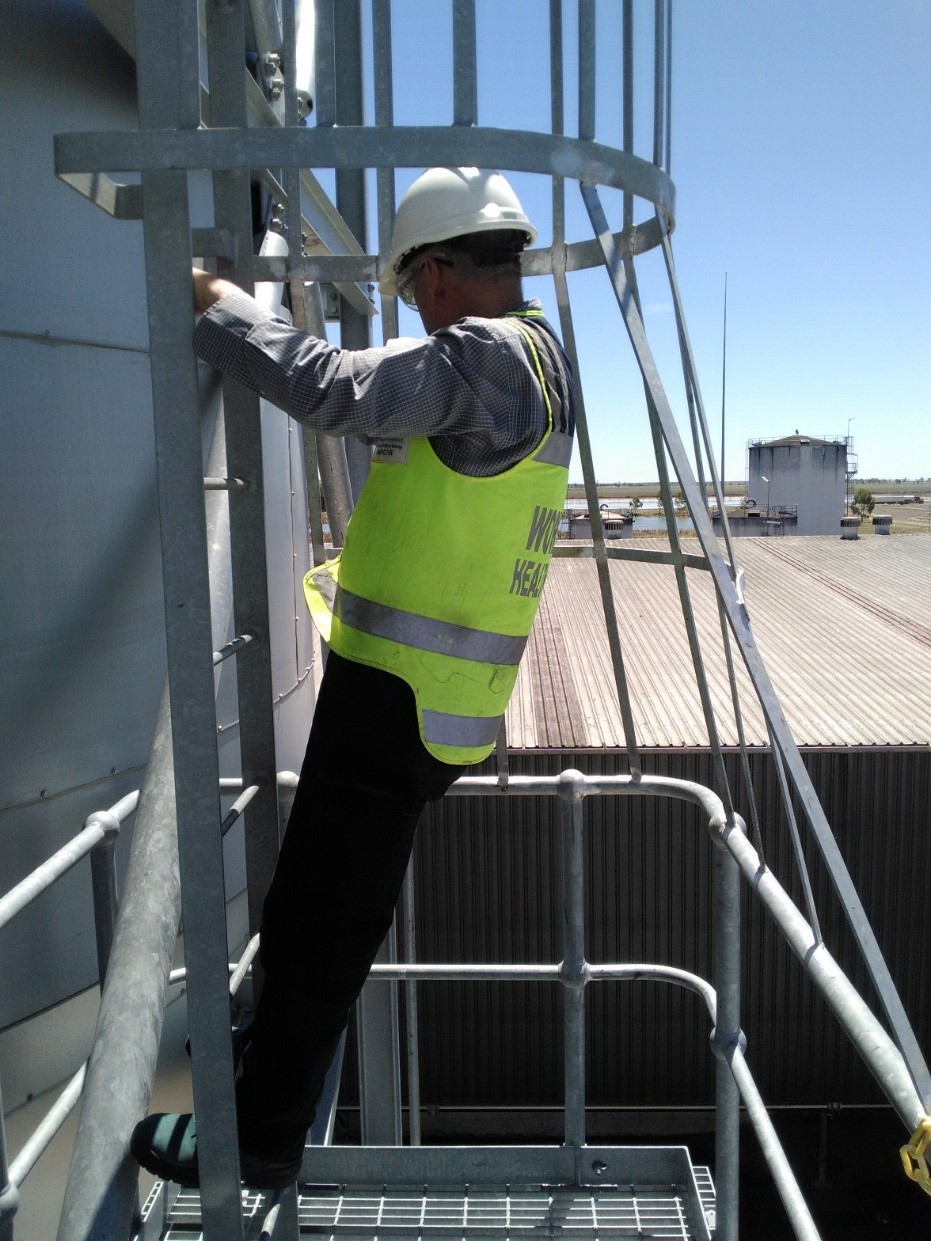Falls from fixed ladders with cages
Issued: 17/05/2019
Last Updated: 17/05/2019
Purpose
The purpose of this safety alert is to highlight the risk of falling from a fixed caged ladder and over the guardrail of the landing below.
Background
In June 2017, a worker was seriously injured when he fell down a caged ladder and over the guardrail of the landing below. He was carrying tools and fell approximately eight metres.
Contributing factors
Falls from fixed ladders with cages can be caused by a number of factors, including:
- workers not having three points of contact on the ladder at all times (e.g. because they are carrying tools)
- the vertical distance from the bottom of the ladder cage to the top of the guardrail is excessive (distance 'A' in Diagram 1)
- the horizontal distance from the ladder to the guardrail (distance 'B' in Diagram 1) in any direction is too small to prevent a worker from toppling over the guardrail if they slip or fall from the ladder
- using the ladder while it is raining or in high wind conditions, increasing the likelihood of a slip or fall.

Diagram 1. Vertical caged ladder with guardrailing on a landing
Action required
A risk assessment should be conducted at workplaces with caged ladders to determine whether anyone could fall from the ladder and over the guardrail of the landing below. The risk assessment should take into account:
- how close the guardrailing is to the uncaged or unguarded section of the ladder
- how frequently the fixed ladder is used
- the slope of the ladder.
If there is a risk that someone can fall from the caged ladder and over the guardrail of a landing below, control measures must be implemented to eliminate or minimise this risk.
The likelihood someone falling from the caged ladder and over the guardrail can be reduced by minimising the unguarded area between the cage and the top guardrail (distance 'A' in Diagram 1). Examples of control measures which would minimise the unguarded area between the cage and top guardrail are shown in Photographs 1 and 2.

Photograph 1. Inclined caged ladder with additional rails installed to extend the height of the existing top guardrail.

Photograph 2. The bottom of this vertical caged ladder has been flared out and extended down to the top guardrail.
Work tasks that do not allow a worker to maintain three points of contact at all times while ascending or descending the ladder should be avoided. Workers climbing ladders should never carry tools or equipment in their hand.
Only one worker should be on a ladder at any time. There should also be an exclusion zone around the ladder to control the risk of falling objects.
Fixed ladders are not a preferred means of access if frequent access to the area is required, for the following reasons:
- there is a greater risk of falling from a fixed ladder
- they require greater physical effort to climb
- they restrict the carrying of tools and equipment.
If a fixed ladder becomes frequently used, an alternate access path or stairway which is easier to climb should be considered.
Fixed ladders that are vertical or close to vertical (e.g. sloped greater than 75⁰ to the horizontal, refer to Photograph 2) are generally more difficult to climb. This increases the likelihood of a person falling off the ladder. Owners of fixed ladders, with or without a cage, that are sloped greater than 75⁰ should consider fitting a permanent or temporary fall-arrest system to the ladder.
Employers should modify or develop documented safe work procedures for:
- the safe use of ladders
- transporting tools, equipment and materials from one work area to another
- the use of permanent or temporary fall-arrest systems (if any).
Workers should be adequately trained in these safe work procedures.
Further information
Further information can be obtained from the following: